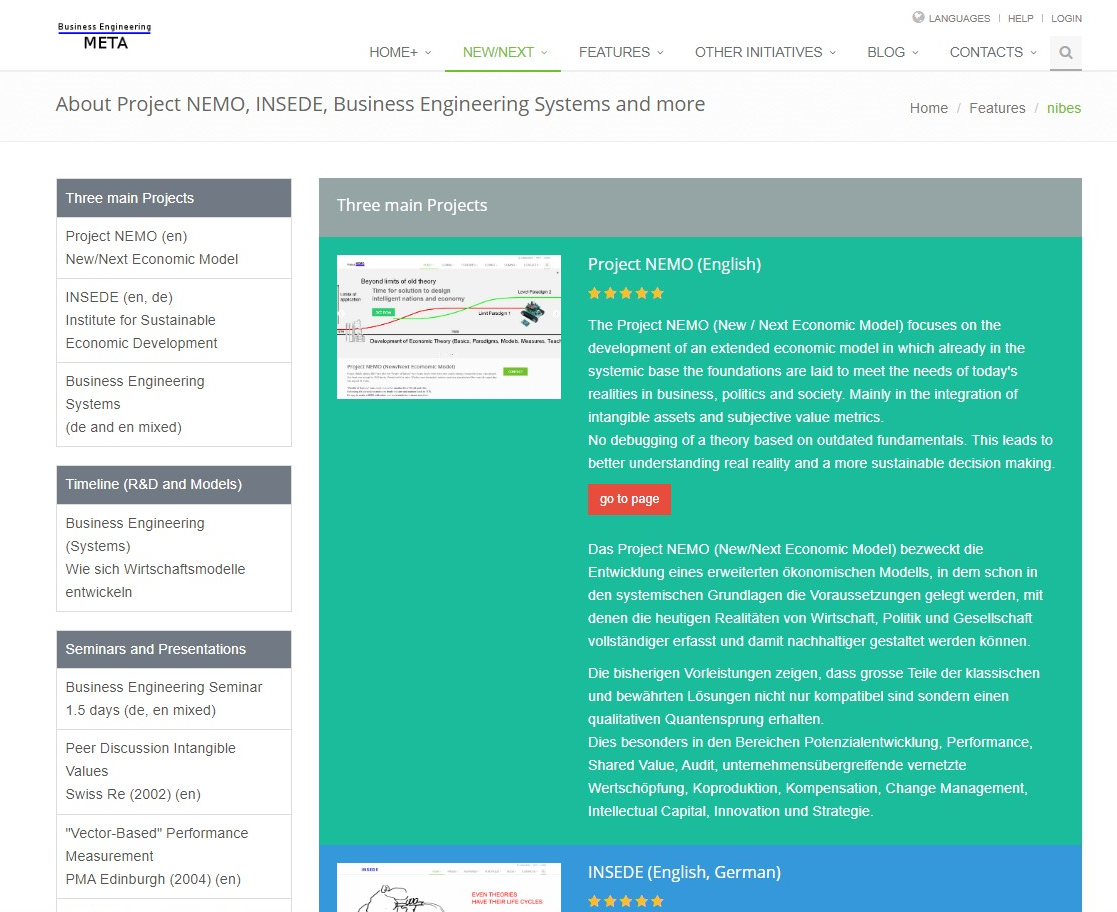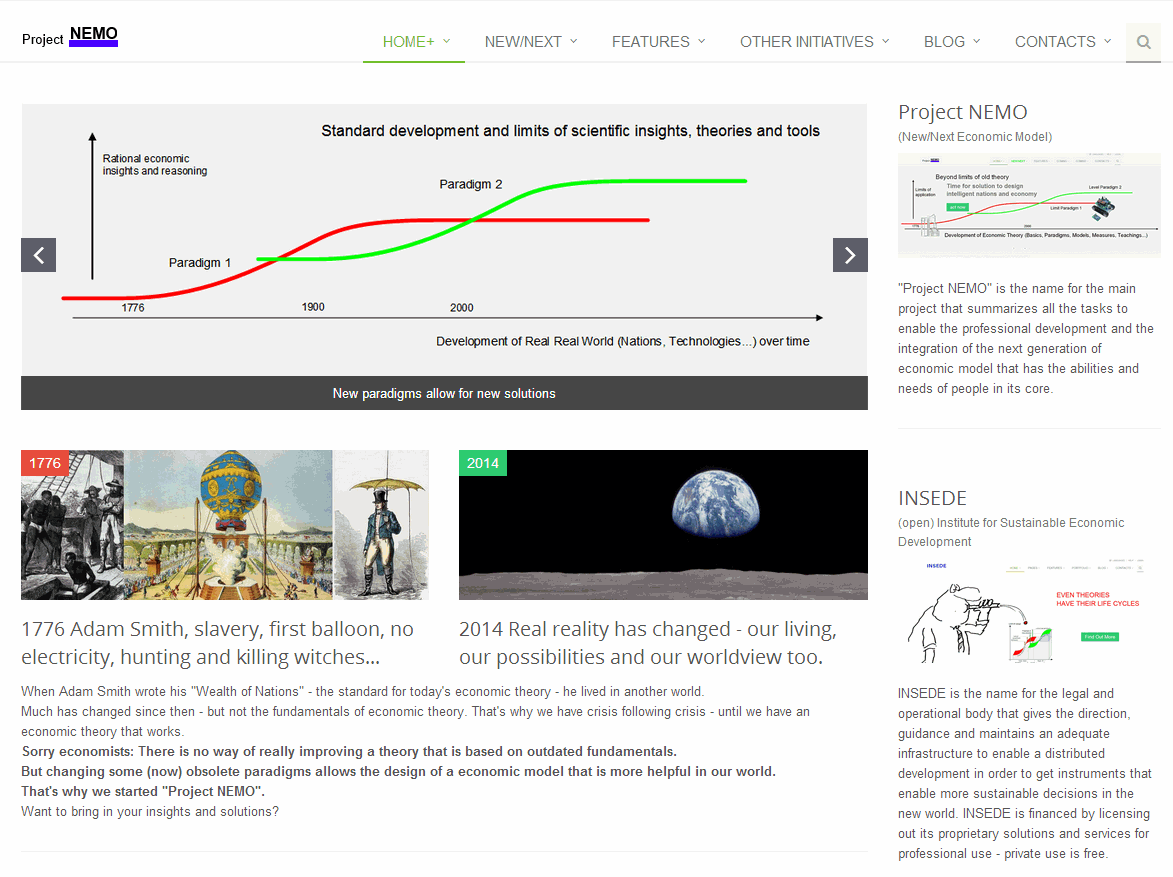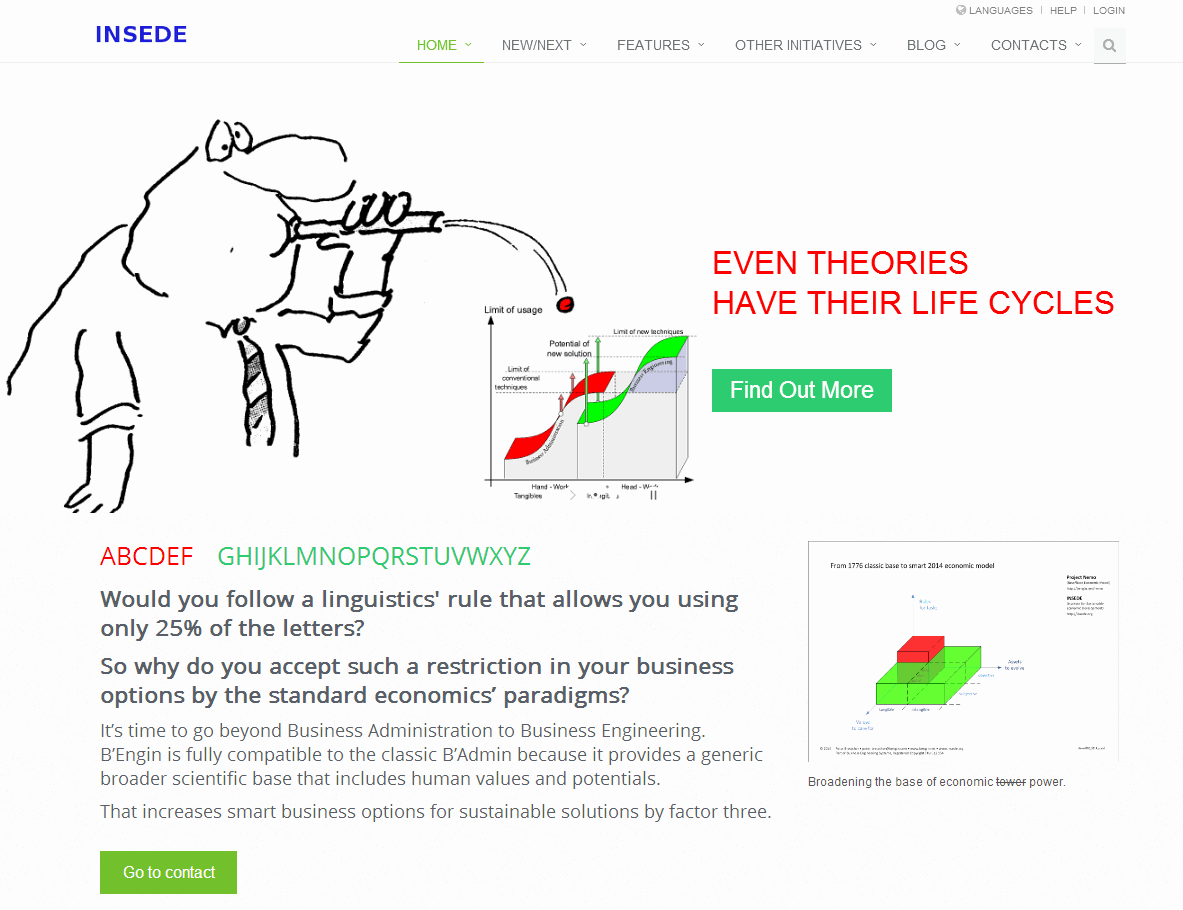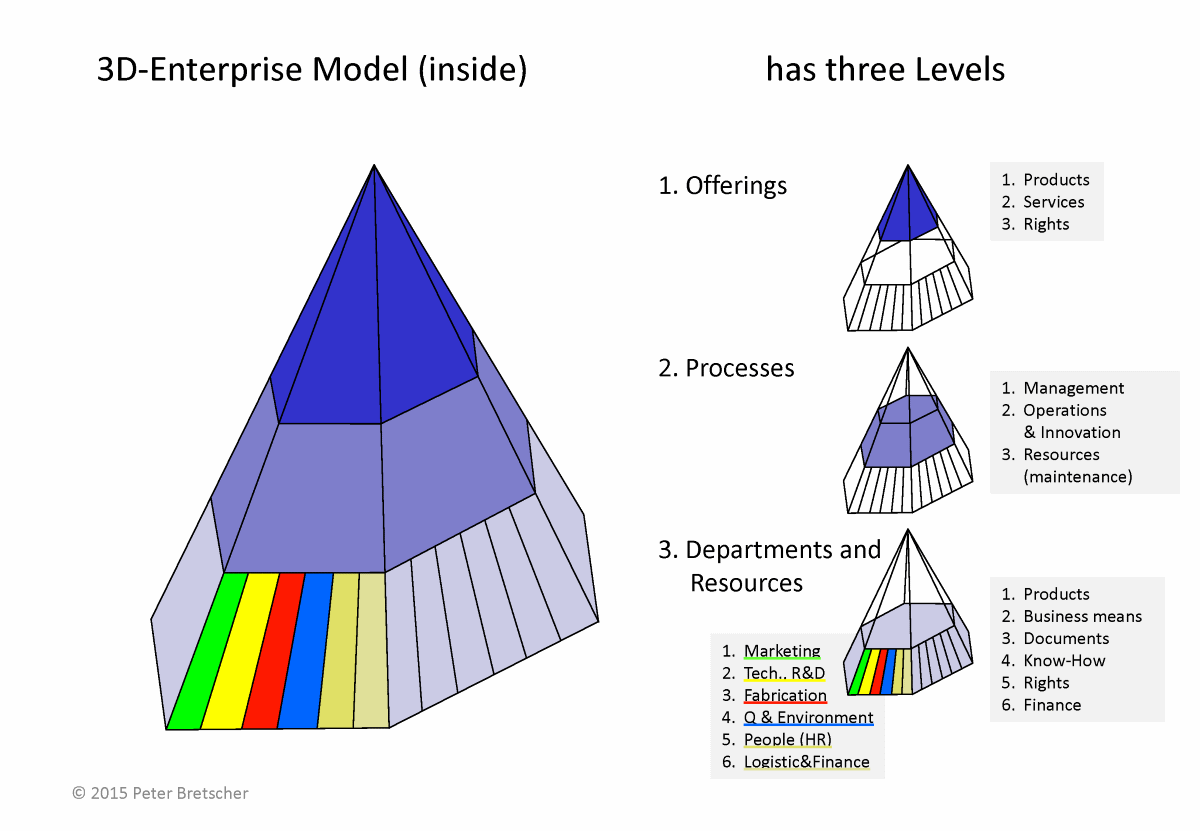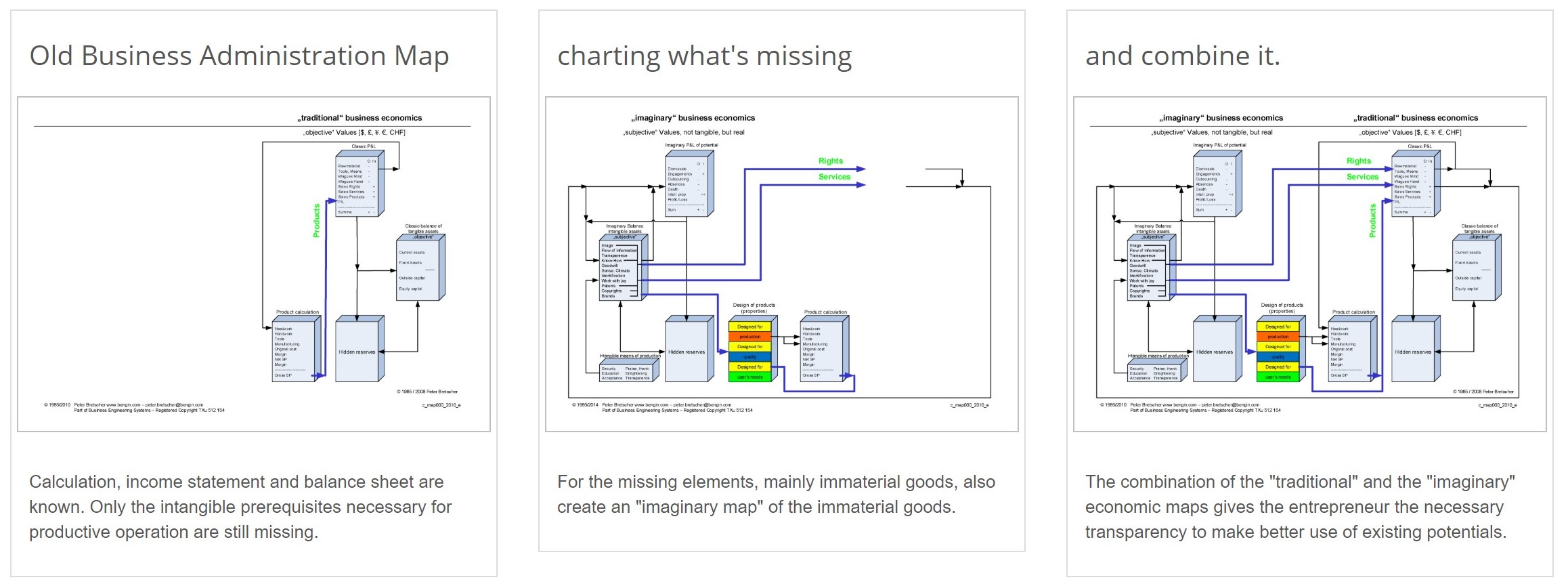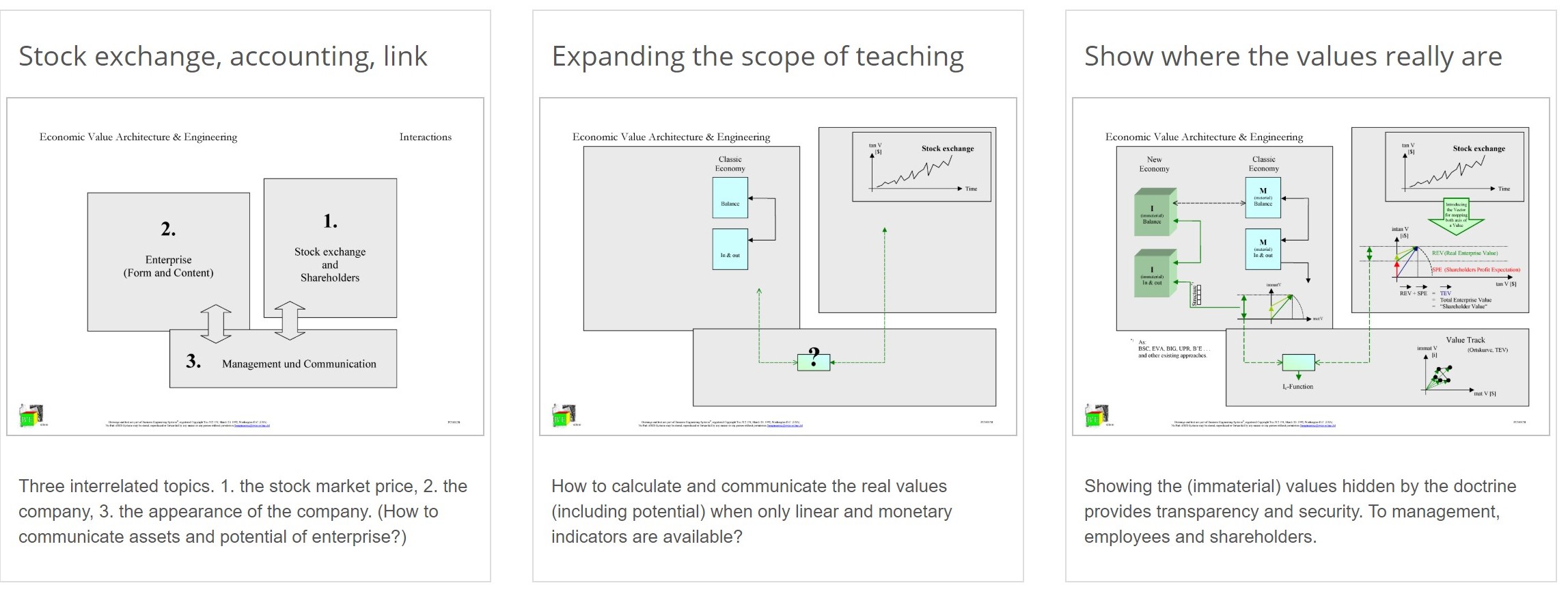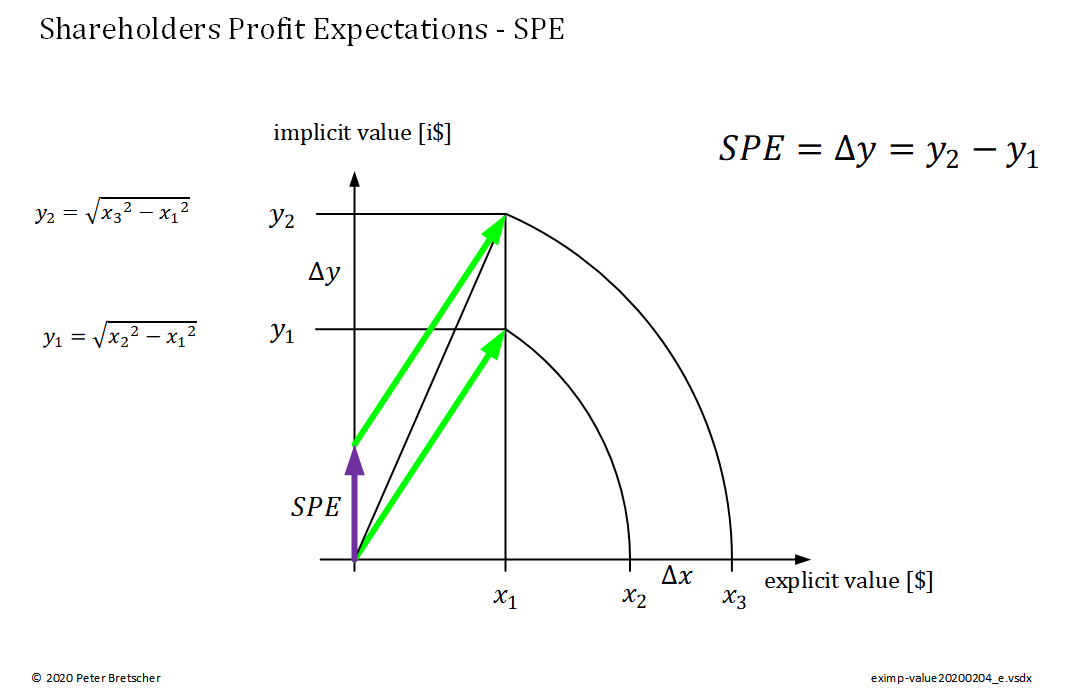Smart Models and Tools for Smart Economy (and Nation)
Two disruptive inventions needed to get a smart enterprise model that enables sustainable economies and nations.
#1: Re-Invent classic focus - integrate intangibles to your mental framework
#2: Re-Invent Value Measures from a linear to a Hybrid Vector Based integral model
Insights and - as the result of any innovation process - methods, rules and tools are following experiences in real life.
They disrupt old views and enable higher levels of cognition and reasoning.
The economic development now is in the 'Smart Level' (blue). This needs a higher cognitive level (@ qualitative and quantitative dimension) and an enhanced logic and reasoning (MindWare for structuring and measuring real reality).
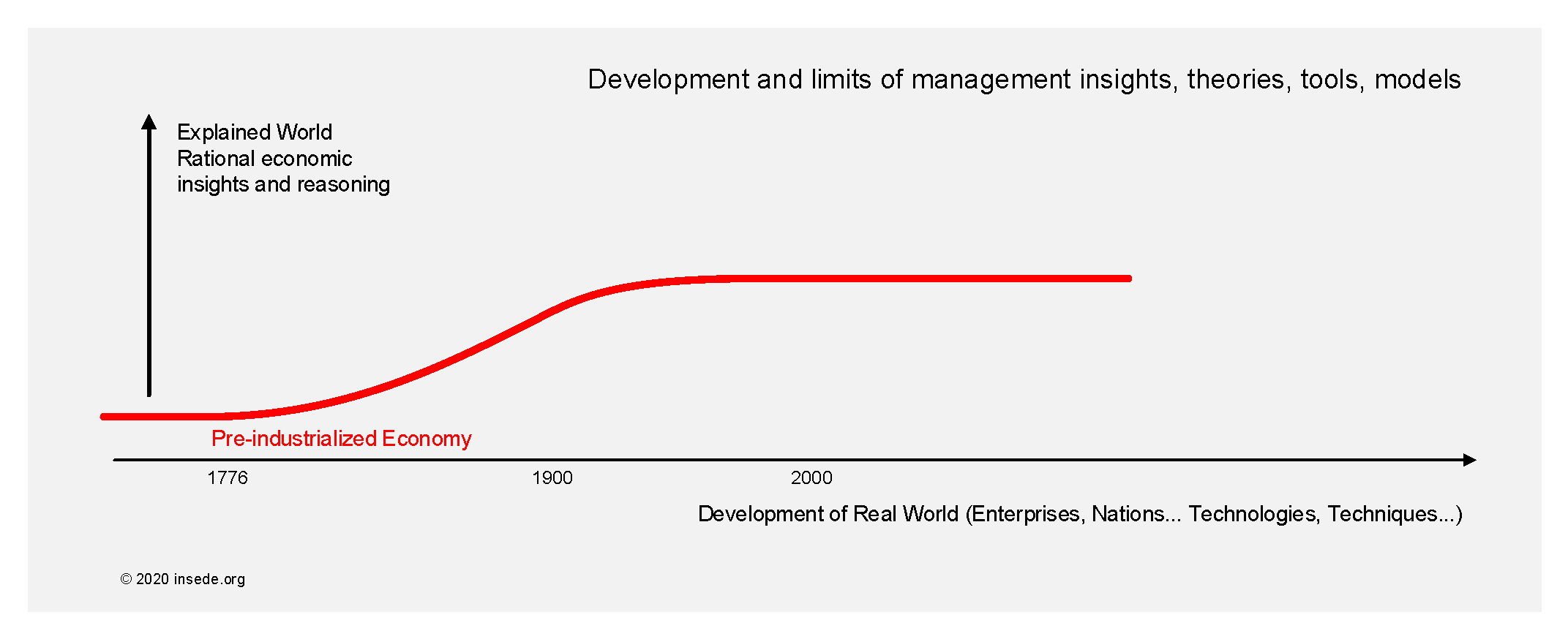
Nobody can successfully run a smart company where decision makers at any level are using obsolete MindWare that were developed for yesterday's economy.
(A) Design an enterprise model that fits your long-term vision. Based on existing assets (red, green, blue?).
(B) Determine how to get there and develop your resources (assets) and processes (including integral 'Hybrid Measures' for Stakeholders and Shareholders).
(Or would you plan a sightseeing tour in New York for 48 tourists with a map from 1776? The year Adam Smith published his book 'Wealth of Nations'.)
Some themes and focus points for explaining real reality in the three types (colored) of economy.
Be aware, that paradigms of older economic levels are not automatically obsolete in the newer economic level. It only has some limitations in 'usefulness'. And that is only bad if you use the older approach in an 'intelligent' system where intangible assets are playing a dominant role.
So, if you are running a system in the smart economy, you - and your decision makers - should better use an appropriate management system for a sustainable growth.
| # | Theme (in Theory) |
Pre-industrialized Economy | Industrialized Economy | Smart Economy |
|---|---|---|---|---|
| 1 | Production Capital | Land, Labour, Capital | Land, Labour, Capital | Land, Labour, Capital |
| 2 | Assets, resources | - tangible | - tangible - intangible |
- tangible - intangible - economic energy (concept of...) |
| 3 | Enterprise levels | One level: - Sale Products |
Two levels: 1. Sale (Products, Services) 2. Processes (Production) |
Three levels: 1. Sale (Products, Services) 2. Processes (R&D, Production...) 3. Prerequisites (Resources) |
| 4 | Offerings | - Physical Products | - Physical Products - Services |
- Physical Products - Services - Rights (Licenses...) - Shares |
| 5 | KPIs (value metrics) | - monetary measures [$, ...] | - monetary measures [$, ...] | - hybrid measures [$ AND i$] (monetary AND non-monetary) |
| 6 | ESG, UN SDGs | non-existent | - linear measures | - hybrid measures (vector based) |
| 7 | Economic Value Paradigm | Shareholder Value [$] | Shareholder Value [$] | - Enterprize Value [$ AND i$] - Shareholders Profit Expectation [i$] |
| 8 | Metrics | - linear | - linear | - hybrid (combines two or more dimensions) - winformation (weighted information) |
| 9 | Teachings | - Economics | - Economics - Business Administration |
- Economics - Business Administration - Business Engineering (Systems) |
Project and proprietary Inventions for next economic model already here
Three Projects: NEMO, Insede and Business Engineering Systems
From top-down view we have launched three projects
- Project NEMO (New/Next Economic/Enterprise Model)
Purpose: Umbrella for realizing 'INSEDE' (as the operation means) and the 'Business Engineering Systems' as the evolving set of MindWare and SoftWare for solving management tasks in a sustainable manner. - Project INSEDE (Institute for Sustainable Economic Development):
Purpose: Setup and maintain an independent and self financing (non profit) organization to develop and spread enhanced ThoughtWare and SoftWare for 'Smart Economies' (and 'Smart Nations'). - Project 'Business Engineering Systems'
Purpose: Deliver instruments (techniques) to decision makers, consultants and teachers to solve economic tasks in a broader and more sustainable manner.
Project NEMO (New/Next Economic Model)
Purpose of Project NEMO:
Setting up the basic framework and operating means (including network) for INSEDE and the next generation MindWare ('Business Engineering Systems') for smart and sustainable economies and Nations.
This includes a trusted network of partners, sponsors and financing the whole project.
Project INSEDE
Purpose of and for INSEDE (Institute for Sustainable Economic Development):
Setting up and maintain an independent and self financing (non profit) organization to develop and spread enhanced ThoughtWare and SoftWare for 'Smart Economies' (and 'Smart Nations').
Ask for options to 'opt in'/support progress.
R&D Economics (MindWare, TeachWare, SoftWare, 3D-Models, Services, Licenses.
Project 'Business Engineering Systems'
(Tools for Smart Business Administration)
Purpose of and for the 'Business Engineering Systems':
Question: How to map and manage smart economic systems?
Answer: Establish a resource based view and logic that includes intangible assets as a main driver in smart economies (and Nations). In addition to this framework. Include a measuring system for determining the power of that 'smart assets'. It allows a more integral perspective of short- and long-term values of projects, enterprises and nations.
It enriches the classic 'Business Administration' and works as an instrument for planning and realizing sustainable strategies in smart economies.
R&D now > CHF 6.3 Mio.; Proprietary work, Registered Copyright 1992, TXu 512 154.
Redesign P&L Statement and Balance Sheet to include Intangibles
Purpose 1 of integrating intangibles:
Better and inclusive view of real assets in smart economies and Nations. -> Strategies -> motivation and performance boost -> re-using hidden assets, more sustainable decision making, more profitable...
Redesign Accounting Priciple to map smart economy
Purpose 2 of integrating intangibles:
Better and inclusive view of real assets in smart economies and Nations. -> Strategies (inside out & outside in) -> performance boost -> as above...
+ Management may visualize investment in 'economic power' of enterprise (introducing the Principle of Economic Energy)...
+ inclusive and integral valuation (Hybrid Long Term Value; Stakeholder AND Shareholder)...
+ helps management to explain their investment in the economic energy of enterprise.
How to determine (incremental) Shareholders Profit Expectation
Hybrid Vector based Value Indicators:
Introducing 'Economic Energy' and the 'Shareholders Profit Expectation' allows to differ between (A) the Value of the Company and (B) the Value/Price of the Share.
Needed for calculation:
- Indicator #1 (x1) is the $-priced asset in the balance sheet.
- Indicator #2 (x2) is the 'SharePrice1' at a specific time.
- Indicator #3 (x3) is the 'SharePrice2' at a later time.
The formula for SPE is on the picture on the left side.
Green vectors are the combination of the (hybrid) value of the enterprise at the starting time.
The purple vector shows the SPE as 'imginary', 'implicit' Profit expectation from shareholder.
Use interactive Excel Sheet below for your own calculations.
Purpose of 'Project NEMO' (New/Next Economic/Enterprise Model) is to enhance classic economics by
(i) including intangible assets as the common source of welfare and wealth and
(ii) disclosing a vector based hybrid value principle enabling monetary AND nonmonetary dimensions as a compound/hybrid value measure.

